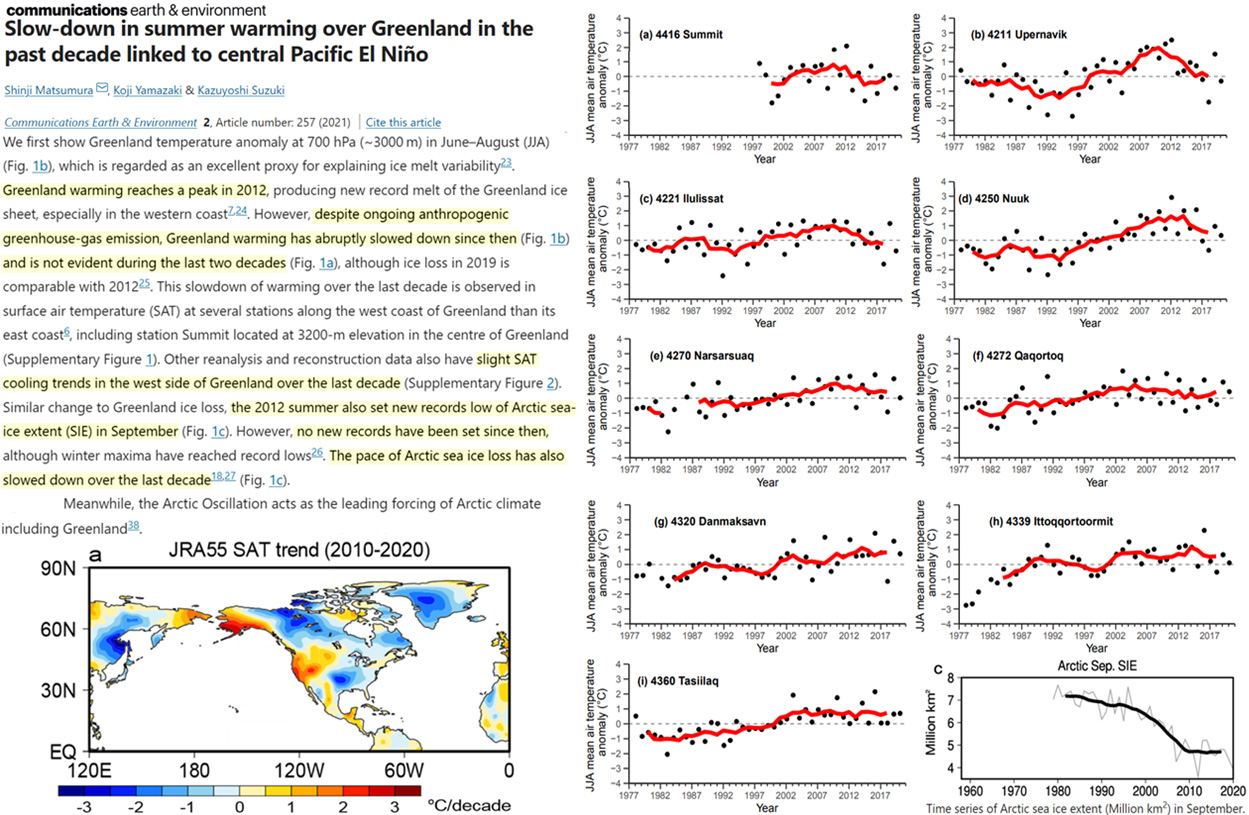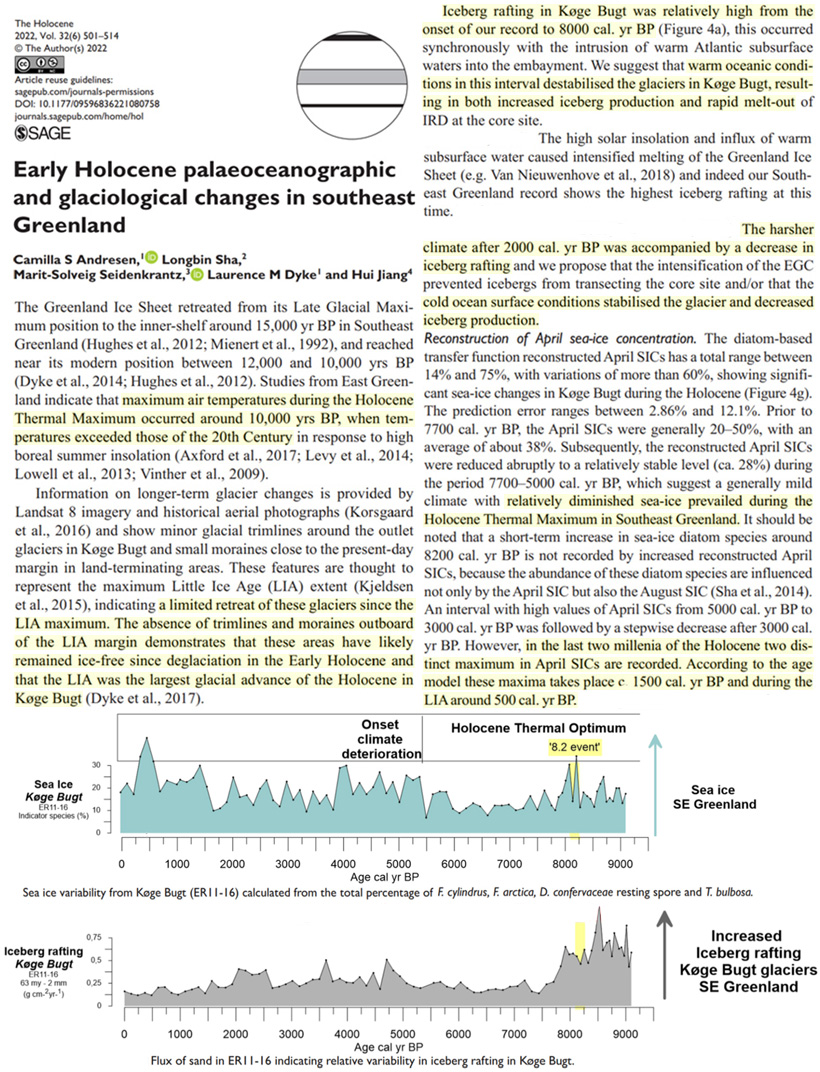By Kenneth Richard
More evidence surfaces showing Greenland isn’t cooperating with the global warming narrative.
The notorious “Climategate” e-mail exchanges between activist scientists like Drs. Phil Jones and Tom Wigley revealed how grave a concern it was in 2004 that “GREENLAND HAS BEEN COOLING SIGNIFICANTLY” since the 1950s.
“…a warming trend occurred in the Nuuk fjord during the first 50 years of the 1900s, followed by a cooling over the second part of the century, when the average annual temperatures decreased by approximately 1.5°C.”
“…whatever the rest of the Northern Hemisphere may be doing, the part that holds the lion’s share of the hemisphere’s ice has been cooling for the past half-century, and at a very significant rate…”
“Greenland’s temperature trend of the past half-century has been just the opposite — and strikingly so — of that of which is claimed for the Northern Hemisphere and the world by the IPCC and its climate alarmist friends.”
“[Greenland cooling] presents these folks with a double problem, as they have historically claimed that high northern latitudes should be the first to exhibit convincing evidence of CO2-induced global warming.”
Image Source: FOIA
A 2016 analysis of Greenland ice sheet melt attribution indicated any contribution from anthropogenic climate forcing was still “too small to be detected”.
Image Source: Haine, 2016
NTZ recently highlighted a study showing (a) West and central Greenland cooled by about 1°C from 2010 to 2020 (see JRA55 SAT trend image), (b) Arctic sea ice melt has “slowed” or stalled since 2007 with “no new records” since 2012, and (c) Greenland warming peaks in 2012 but “is not evident during the last two decades”.
Image Source: Matsumura et al., 2021
Now a new study reports there has only been “limited retreat” of southeastern Greenland glaciers since the 1600s-1800s CE (Little Ice Age) maximum ice extent. There is evidence this same region “likely remained ice free” throughout the Early Holocene.
Iceberg rafting and low sea ice are indicative of climate trends over the Holocene. Notice the graphical image shows sea ice in this region is only slightly below the Little Ice Age peak and is still one of the higher extents of the last 9,000 years.
Also see the iceberg rafting trends (bottom graph). Rafting frequency increases due to warmer temperatures and rapid glacier melt, and the most recent iceberg rafting has also been among the lowest of the last 9,000 years.
Image Source: Andresen et al., 2022
As Professor Phil Jones wrote in 2004, “Clearly, someone forgot to tell Greenland what it’s supposed to be doing”.





